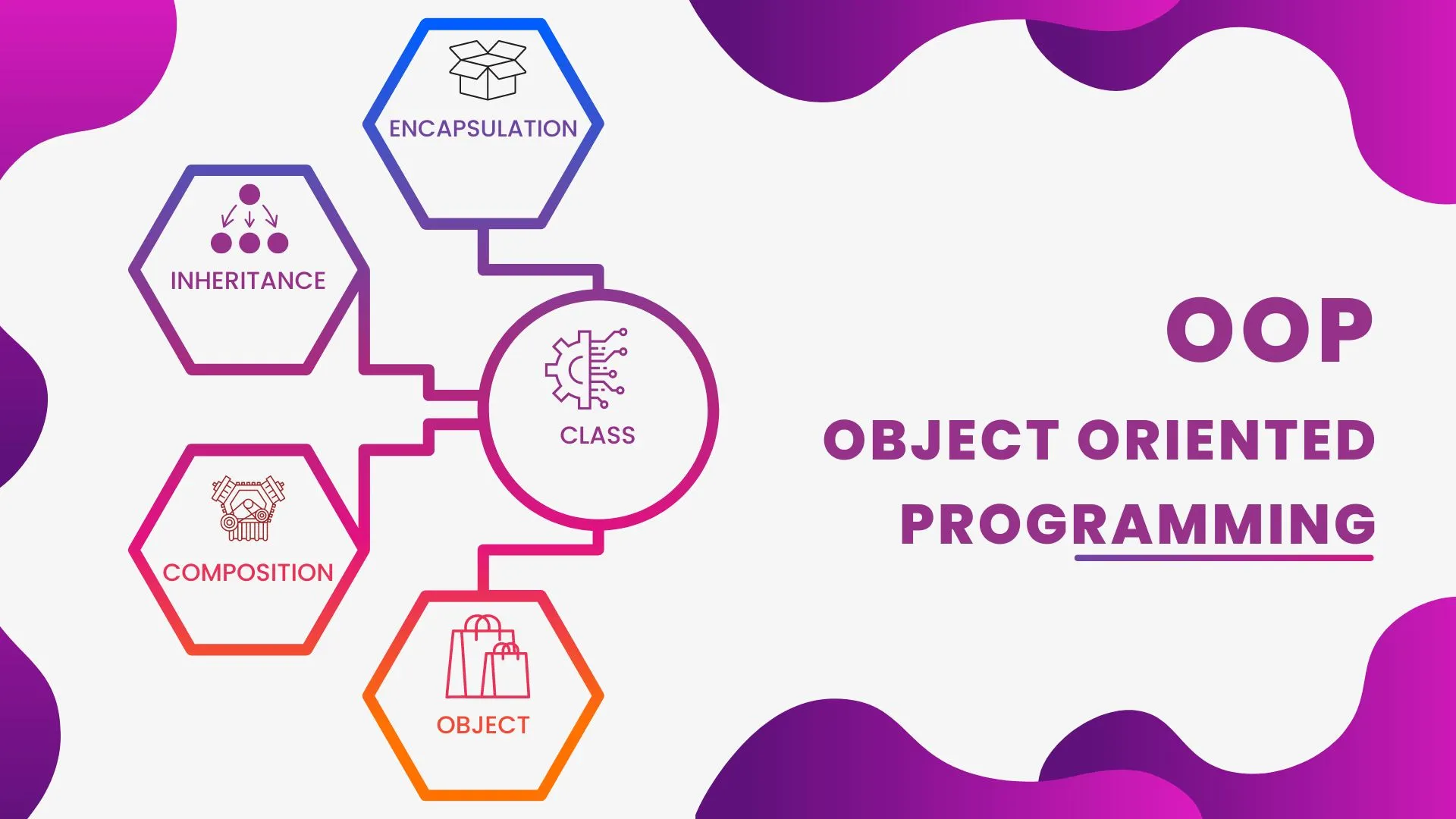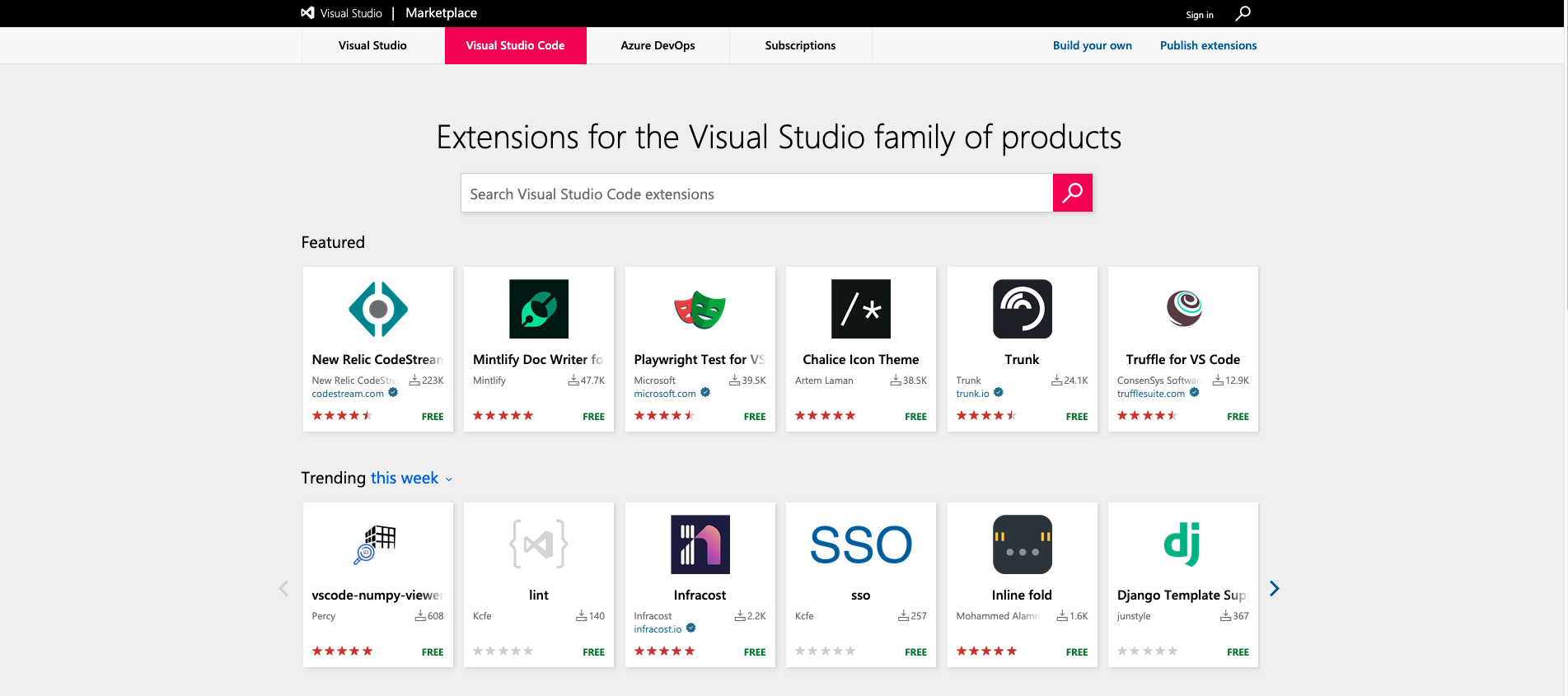Object-Oriented Programming (OOP) is a programming paradigm based on the concept of objects, which can contain data and behavior. In OOP, objects interact with each other by sending messages, and objects can be grouped into classes, which define their shared behavior and data.
OOP was created to improve software design, making it more modular, easier to maintain, and more scalable. Some of the key features of OOP include encapsulation, inheritance, and polymorphism, which allow objects to be reused and easily extended.
OOP - Object Oriented Programming Paradigm
Programming paradigms are different approaches or styles to software development, and each paradigm has its own set of techniques and methodologies. There are several programming paradigms, including Object-Oriented Programming (OOP), Functional Programming, Procedural Programming, and more.
In this course, we will focus on Object-Oriented Programming, one of the most widely used programming paradigms in the software industry. But before diving into OOP, let’s briefly introduce the other popular paradigms.
Functional Programming is a programming paradigm that emphasizes the use of mathematical functions and is based on lambda calculus. This paradigm is focused on avoiding state changes and mutable data, and instead encourages immutability and the use of functions to achieve computational results.
Procedural Programming is a programming paradigm that focuses on breaking down a program into smaller procedures or functions. In this paradigm, the program is structured as a series of procedures or functions, each of which performs a specific task.
Now, let’s talk about Object-Oriented Programming.
Object-Oriented Programming is a programming paradigm that is based on the concept of “objects”, which can contain data and behavior. OOP has its roots in the late 1960s and early 1970s, and it was formally introduced in the late 1980s. The main proponents of OOP were Alan Kay, Bertrand Meyer, and Grady Booch.
The idea behind OOP is to represent real-world objects and their behavior in a computer program. This allows developers to write software that is more intuitive and easier to understand, as well as reuse code by creating objects that can be used in multiple applications.
OOP has evolved over time, and its use has become widespread in the software industry. Today, several programming languages support OOP, including PHP, Java, Python, C++, Ruby, and more.
OOP - Object Oriented Programming Advantages
The advantages of OOP include the ability to write code that is more maintainable, reusable, and scalable. OOP also provides a clear structure for software development and makes it easier to model real-world objects and their behavior.
This is a detailed list of advantages on using Object Oriented Programming:
Encapsulation: OOP promotes encapsulation, which means that objects can hide their internal details and behavior from the rest of the program, making the software more modular and easier to maintain.
Reusability: OOP encourages the reuse of objects, so that code can be written once and used many times. This can save time and effort, and improve the quality of the code.
Abstraction: OOP allows for abstraction, which means that objects can be defined in terms of their behavior, without exposing their underlying implementation. This makes it easier to understand and maintain the software.
Inheritance: OOP supports inheritance, which means that objects can inherit behavior and data from a parent class. This allows for the creation of new objects that are based on existing ones, and can simplify code reuse and maintenance.
Polymorphism: OOP supports polymorphism, which means that objects can be treated as instances of a class or as instances of any of its subclasses. This allows for the creation of generic and flexible code.
Scalability: OOP makes it easier to develop scalable software, as new objects can be added or existing objects can be modified, without affecting the rest of the program.
Improved organization: OOP helps to organize software into meaningful units, such as classes and objects, which can make it easier to understand, debug, and maintain.
Overall, OOP provides a structured and organized approach to software development that can result in improved code quality, easier maintenance, and more scalable software.
Object Oriented Programming Characteristics
Object-Oriented (OO) programming focuses on modeling real-world objects as software objects, resulting in a closer alignment between the language used by the analyst and the language used by the user. For example, a library application might use the object “Book” to represent books, and “User” to represent users. This approach helps to make the software more intuitive, and easier to understand and use for both the analyst and the user.
In addition to improved user understanding, using OO programming can also lead to greater productivity in the development process. By reusing existing objects in different systems, developers can save time and effort in the software development process. For instance, a “User” object created for one system can be easily used in another system, reducing the time required for software development.
Another benefit of using OO programming is that if the object library is designed to be independent of the operating system, developers can change the platform or the operating system with ease. For example, if an application has been developed using an object library that is independent of the operating system, the code can be recompiled for a different operating system without needing to rewrite or modify the code. This allows developers to more easily adapt their software to different environments or requirements.
Overall, OO programming is a powerful and flexible approach to software development that has many benefits, including better alignment between the language used by the analyst and the user, greater productivity, and improved flexibility and adaptability in the development process.
Organization of knowledge and behavior in Object Orientation
According to the Encyclopedia Britannica, people consistently use three methods of organization to structure their understanding of the world, and Object Oriented Programming (OOP) relies on all three.
The first method is differentiation, which involves identifying the unique attributes and characteristics of individual objects. Imagine the context of an organization for sales management, differentiation can involve identifying the unique attributes of each customer, such as name, document number, email and address.
The second method is to distinguish between objects as a whole and their component parts. In the context of sales management, this may involve distinguishing between the sales process as a whole and its component parts, such as prospecting, lead generation, and order fulfillment. Or even, an invoice that is composed of sales items.
The third method is the formation of different classes of objects, based on shared characteristics - context, cohesion. In our sales management example, this might involve grouping all customers into one class and all products into another class based on their shared characteristics.
Using these three methods of organization, developers can create powerful and flexible software systems that can model complex real-world scenarios with ease. For example, in a sales management system, developers can create classes for customers and products, with attributes for each customer’s name, contact information, and order history, as well as methods for managing inventory, sales, and more. of the sales process. Using OOP to model the sales management domain, developers can create a modular, maintainable, and extensible system that can grow and evolve over time.
Risks of go wronh when developing using OOP concepts
The object-oriented concept is a way of thinking about software development that is based on the idea of modeling real-world objects and their interactions. However, this way of thinking can be difficult to implement without the right organizational mindset. For example, modeling features of objects as if they were classes or trying to erroneously apply inheritance concepts to sets of objects that are not part of the same cohesion class.
In the next lessons, we will work to clarify these concepts further.
Furthermore, the object-oriented concept can be difficult to implement correctly without a strong understanding of the application of its concepts in the support offered by the programming language to be used. Even with a good understanding of the language, there are still potential risks, such as writing an application with features of the procedural paradigm inside classes without proper context (again - cohesion).
Object Oriented Programming Languages
Here is an timeline of the introduction and widespread support of some of the most popular Object-Oriented Programming (OOP) languages:
Smalltalk (1980): Smalltalk was one of the first OOP languages and is considered to be the purest form of OOP. It was created at the Xerox PARC research center by Alan Kay and Dan Ingalls.
C++ (1983): C++ was created as an extension of the C programming language and added support for OOP features such as classes, objects, inheritance, and polymorphism.
Objective-C (1983): Objective-C was created as a high-level programming language for the Apple Macintosh, and it added OOP features to the C programming language.
Eiffel (1985): Eiffel is an OOP language that was designed to make software development safer and more efficient. It is known for its strong typing and support for Design by Contract.
Erlang (1986): Erlang is a concurrent programming language that was designed for use in telecommunication systems. While it does not have traditional OOP features, it has a different approach to object-oriented design, with the use of processes and message-passing.
Python (1991): Python is a high-level programming language that has support for OOP features, including classes, objects, inheritance, and polymorphism.
Java (1995): Java was created as a portable, platform-independent programming language for the internet. It is known for its powerful OOP features, including classes, objects, inheritance, and polymorphism.
Ruby (1995): Ruby is a high-level programming language that was designed to be easy to read and write. It is known for its powerful OOP features, including classes, objects, inheritance, and polymorphism.
PHP (1995): PHP is a server-side scripting language that was originally created for web development. It added support for OOP features in PHP 5, including classes, objects, inheritance, and polymorphism.
JavaScript (1995): JavaScript is a high-level programming language that was created for use in web browsers and nowadays adopted on backend softwares and mobile. It has support for OOP features, including classes, objects, inheritance, and polymorphism.
Go (2009): Go is a statically-typed, concurrent programming language that was created by Google. While it does not have traditional OOP features, it has a different approach to object-oriented design, with the use of interfaces and methods.
Dart (2011): Dart is a client-optimized programming language created by Google. It has support for OOP features, including classes, objects, inheritance, and polymorphism.
Kotlin (2011): Kotlin is a statically-typed programming language that was created to improve upon Java. It has support for OOP features, including classes, objects, inheritance, and polymorphism.
These are just a few examples of the most popular OOP languages, and the timeline of their introduction and widespread support for OOP.
Note that while some of these languages are considered to be pure OOP languages, others have added support for OOP features over time, or have a different approach to object-oriented design.
Final considerations
Lets finish with a definition of Object Oriented Programming by James Rumbaugh:
“The object-based approach is first concerned with identifying the objects contained in the application domains and then with establishing the procedures relating to them. While this may seem more indirect, object-based software holds up better as requirements evolve by relying on the application domain’s own fundamental structure, rather than relying on the ad hoc functional requirements of a single problem.”
(Rumbaugh[94])
In conclusion, Object-Oriented Programming is a widely used programming paradigm that has been instrumental in the development of modern software. OOP has been proven to be a powerful tool for software development, and it continues to evolve and grow in popularity. If you’re interested in learning more about OOP, follow me on Youtube, Twitter and this blog.
Learn more: Classes on OOP





Comments